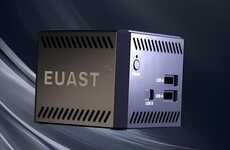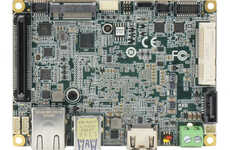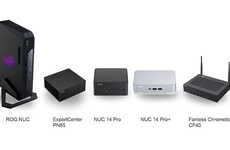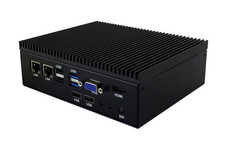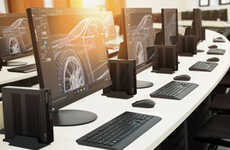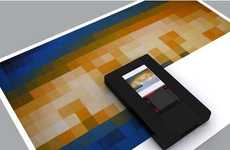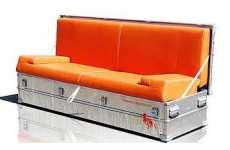
Space Cube PC is World's Smallest Computer
Jeremy Gutsche — May 7, 2006 — Unique
References: shimafuji.co.jp & techeblog
At 2" x 2" x 2.2", the Space Cube PC is tiny. In fact, it might be smaller than your MP3 player. The tiny PC boasts a 300 MHz processor, 64 mb of SDRAM and a 1280 x 1024 external video connector. Also known as the SEMC5701A Teacup, this tiny computer runs on Linux.
Implications - Consumers are looking for smaller ways to perform the tasks that they typically perform on bulkier technology. Rather than simply pertaining to convenience, small products also have an enormous kitsch factor. Designers can create toys, games and home decor that are minuscule, culminating in a product that serves as something that sparks conversation and has a humorous aspect to it.
Implications - Consumers are looking for smaller ways to perform the tasks that they typically perform on bulkier technology. Rather than simply pertaining to convenience, small products also have an enormous kitsch factor. Designers can create toys, games and home decor that are minuscule, culminating in a product that serves as something that sparks conversation and has a humorous aspect to it.
Trend Themes
1. Small Computing - Customers are seeking out smaller alternatives for performing everyday tasks, creating opportunities for designers to create miniaturized products with a humorous and conversation-starting aspect.
2. Micro Technology - The demand for compact and portable devices is driving advancements in micro technology, providing the opportunity for businesses to develop innovative solutions in various industries.
3. Tiny Electronics - The popularity of tiny electronics is growing due to their convenience and kitsch appeal, enabling designers to create unique toys, games, and home decor that spark conversation and stand out in the market.
Industry Implications
1. Consumer Electronics - The rise of small computing devices presents opportunities for businesses in the consumer electronics industry to develop miniature gadgets, enhancing portability and convenience for customers.
2. Toy Manufacturing - The trend towards miniaturized products creates opportunities for innovation in the toy manufacturing industry, with businesses able to produce tiny toys that are both functional and serve as conversation starters.
3. Home Decor - The demand for small and unique electronic items opens up opportunities for businesses in the home decor industry to create tiny electronic decorations that add a touch of novelty to living spaces.
6.5
Score
Popularity
Activity
Freshness

